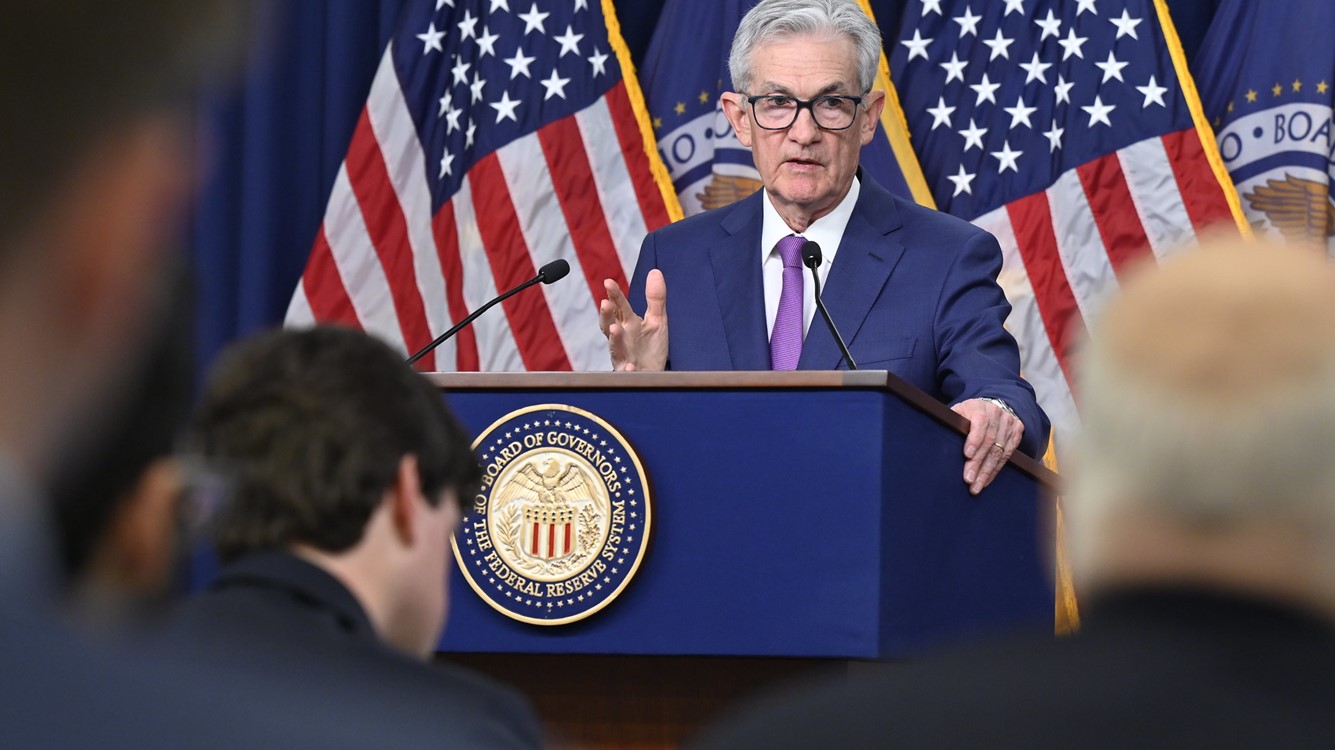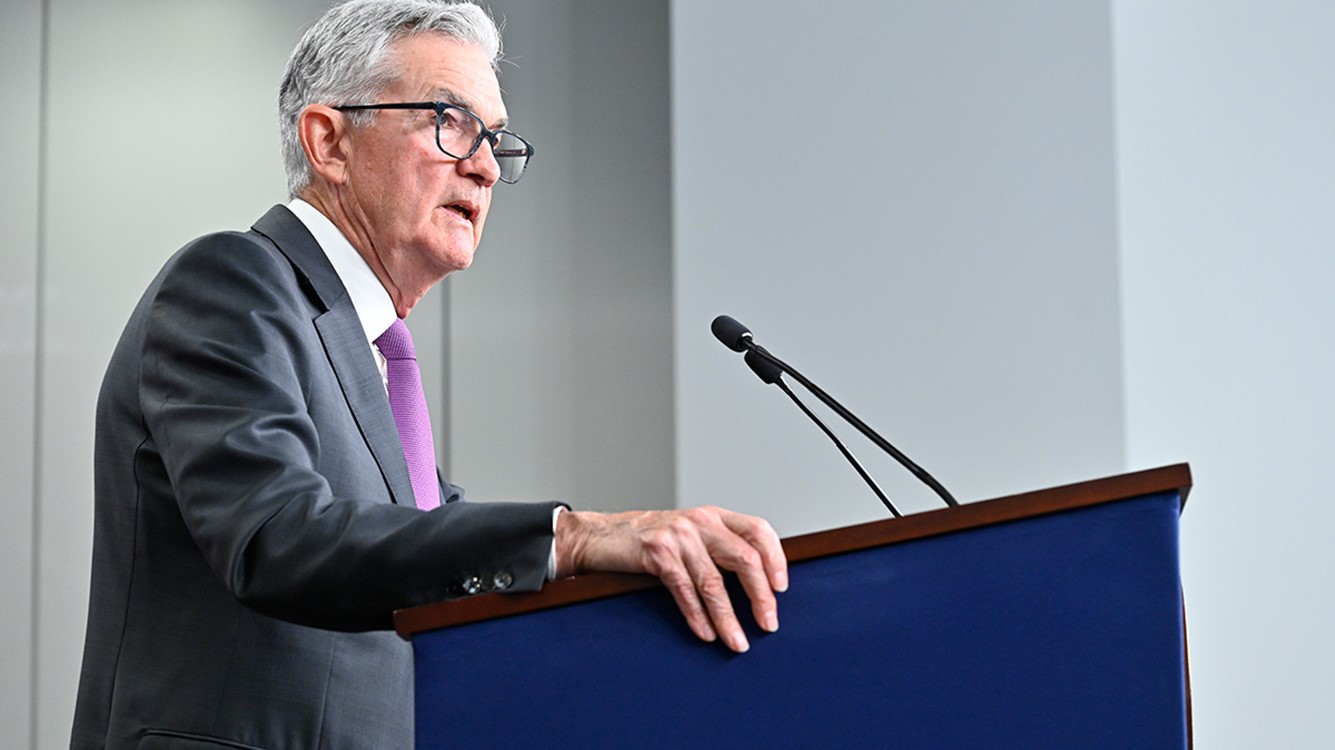Powell stays the course
The Fed no longer believes that a recession is necessary to get inflation down.

March 20, 2024
The Federal Open Market Committee (FOMC) - the policy making arm of the Federal Reserve - decided to unanimously hold rates steady at 5.25% to 5.50% in March. The statement following the meeting was changed very little. The notable change was a line arguing that employment was moderating; it sees underlying growth in the economy as more resilient and stronger than in December. The Fed upgraded its forecast for growth and inflation, while the unemployment rate was reduced slightly. The median number of cuts remained at three rate cuts for the year; nine favored only two cuts, while 10 expect three or more.
The forecast for 2025 and 2026 now have fewer rate cuts. That reflects the higher inflation outlook and the Fed's desire to slowly squeeze inflation out of the system. It sees a slow grind as less disruptive than a recession.
Participants at the meeting also increased the estimate of the neutral fed funds rate. The neutral rate is a moving target. However, it is reasonable to believe that the neutral rate is not as low as we saw in the wake of the global financial crisis. That is clearly what the Fed is signaling.
Many read the forecast as a tolerance by the Fed for higher inflation. Fed Chairman Jay Powell pushed back against that notion, underscoring that the Fed is still committed to hitting the 2% inflation target. The Fed is still willing to keep rates higher for longer, if necessary.
When pushed on what the Fed is focused on in determining when and how rapidly to cut, Powell was blunt: Inflation and its components are what will determine the course of action. When asked about wages, he argued that wages were still somewhat higher than what they thought was consistent with the Fed's target. However, he argued that there was not a lot of evidence that wages were a major driver of inflation this cycle.
We still expect the Fed to start cutting rates in June. That move is likely to come with at least one dissent, given how many participants in the meeting think only two rate cuts are necessary. Atlanta Fed President Raphael Bostic has been open about his preference for rate cuts to begin in the second half; he would likely dissent in June if inflation doesn't come down more rapidly. Dissents are not done in a vacuum. Voting members usually reflect the opinions of those who do not vote as well. Powell acknowledged the risk of a dissent in the vote to cut and said dissents were welcome. It is a natural consequence of the policy setting process given the uncertainty we currently face.
The Fed has come a long way from the 1980s and 1990s, when dissents within the FOMC were rare. Back then, there was a fear that dissents reflected a lack of confidence in the Fed Chair. Former Fed Chairman Paul Volcker resigned when his Board voted against him after a key vote in May 1987. The Fed has been much more transparent that monetary policy is more of an art than a science, especially as we approach turning points.
Powell also addressed the balance sheet. The Fed is expected to begin tapering the pace at which its assets roll off its balance sheet. We could see an announcement on tapering at the May meeting. The goal is to keep the Treasury bond market from seizing. He was explicit that the Fed is trying to avoid a repeat of 2019, when the Fed was forced to add reserves to the system and cut rates, as markets stopped functioning. The Fed still intends to continue reductions in its balance sheet, albeit at a slower pace, for some time.
The Fed has been much more transparent that monetary policy is more of an art than a science, especially as we approach turning points.
Diane Swonk, KPMG Chief Economist
Bottom Line
The Fed is committed to achieving a soft landing, not a recession. The Fed has done a full U-turn on this. We first saw it after the December meeting, when Chair Powell said the Fed was trying to avoid a hard landing. The Fed no longer believes that a recession is necessary to get inflation down. It is willing to tolerate a slow glide path to reach its goal of 2% inflation, given how much progress has been made on inflation. Powell was clearly pleased with where we are and relieved that a recession is no longer necessary. What would prompt the Fed to cut more aggressively? A much weaker economy.
Explore more

A hawkish hold
The Fed is “not declaring victory at this point.

KPMG Economics
A source for unbiased economic intelligence to help improve strategic decision-making.

We’re not in Kansas anymore...The view from Washington
Debate over whether the first rate cut will occur in June will be heated.
Subscribe to insights from KPMG Economics
KPMG Economics distributes a wide selection of insight and analysis to help businesses make informed decisions.
Meet our team

